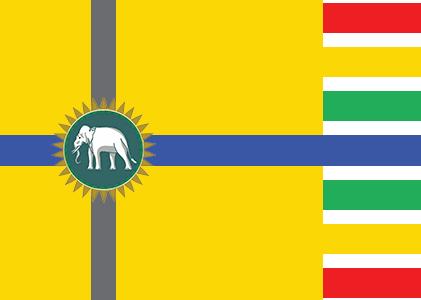
2 minute read
Vernacular Architecture
adapt to geography by utilising local stone, wood and brick. These materials are locally available and can be without soil in Kashmir is generally classed as clayey, loamy rich and light, peaty and low lying swamps and is alluvial origin but is quite fertile. A Kashmiri brick is special, both baked and unbaked. The maharaja brick was completely hand-made, small and very dense

Advertisement
LADAKH The Ladakhi soil is quite bare and rocky with gravel slopes. Here rooftops then were made of birch-bark layered outwardly with an insulation of fertile clay and turf, studded thickly with bulbs of tulips and lilies. the roofs were lost once the British began supplying the Valley with cheap corrugated galvanised sheeting. Turf roofs were environmentally friendly, cool in summer and warm in winter, but almost no examples survive today. The walls are made of rubble and stone on which soil is rammed to plaster it. Floor slabs are also made of timber covered in mud.
BELIEF SYSTEMS
· HINDUISM Hindus in kashmir are normally from Kashmiri dogra and gujjar etinic groups. There are about 133 dardic hindus still remaining and are the lowest among all the other ethnicities. The religious practices of Hindus of Kashmir revolve around the worship of Shiva and Shakti.
• ISLAM Jammu and Kashmir has a Muslim majority population. Though Islam is practiced by about 67% of the population of the state and by 97% of the population of the Kashmir valley
· BUDDHISM The origin of Buddhism in Kashmir is obscure. Buddhist sources attribute the origin of Buddhism in Kashmir to a monk of Varanasi, Majjhantika, who was also a disciple of Ananda. The Kushana period saw a great resurgence of Buddhism in Kashmir, especially during the reign of Kanishka. Just as all Buddhists, the buddists of Kashmir follow The Five Precepts CHRISTIANITY · SIKHISM
OCCUPATION
The main occupation of kashmiris and the people of jammu has been farming, majorly mountain rice on the stepped farm. Sheep rearing is also practiced in rural areas. In Ladakh, agriculture is scant and grain mostly grown is barley, animal husbandry of yaks is also a major occupation. In Gilgit Baltistan, the Dardic populations also practice subsistence agriculture while the Gujjars rear cows and sheep
FESTIVALS
ISLAMIC FESTIVALS: Eid al-Adha, Eid al-Fitr Shab-e-barat Shab-e-Mehraj, Eid-e-Meelad HINDU FESTIVALS: An interesting fact about Kashmiri Pandit festivals is that some of these are celebrated a day ahead of their celebration by Hindus in other parts of the country. Herath(Shivaratri), Khetchmaavas, Navreh, Zyeth Atham, Tiky Tsoram , Pann, Gaad Baat, Ksheer Bhawani Mela LADAKHI FESTIVALS:Losar, Sindhu Darshan, Hemis Tsechu, Ladakh Festival, Yuru Kabgyat, Phyang Tsedup, Thiksey Gustor, Dosmoche, Matho Nagrang, Stok Guru Tsechu, Saka Dawa Festival, Tak Tok Festival
CUISINE
• KASHMIR: Rice is the staple food of Kashmiris and has been so since ancient times. Meat, along with rice, is the most popular food item in Kashmir.Tabakhmaaz, Shab Deg, Goshtaba, Riste, Nader ti Gaad, Machwangan Kormeh, Mujh Gaad, Daniwal Kormeh, Rogan Josh, Yakhni, Harissa, Kashmiri Chai, Kahwah LADAKH: The food of Ladakh is heavily influenced by nearby regions such as Tibet and Kashmir. Ladakhi Pulao, Skyu, Thupka, Momo, Thingmo, Butter Tea
Our Entry is in the construction worker housing division, by the name of Team EnGriha. The full project details will be available post completion of the competition.


Alternate





WALKTHROUGHS: https://drive.google.com/drive/u/1/ folders/1uDDUGOf-yZwy_iowEgVws-97e5Ns_rvl







Youtube Channel: https://www.youtube.com/@historytweaks2695




























